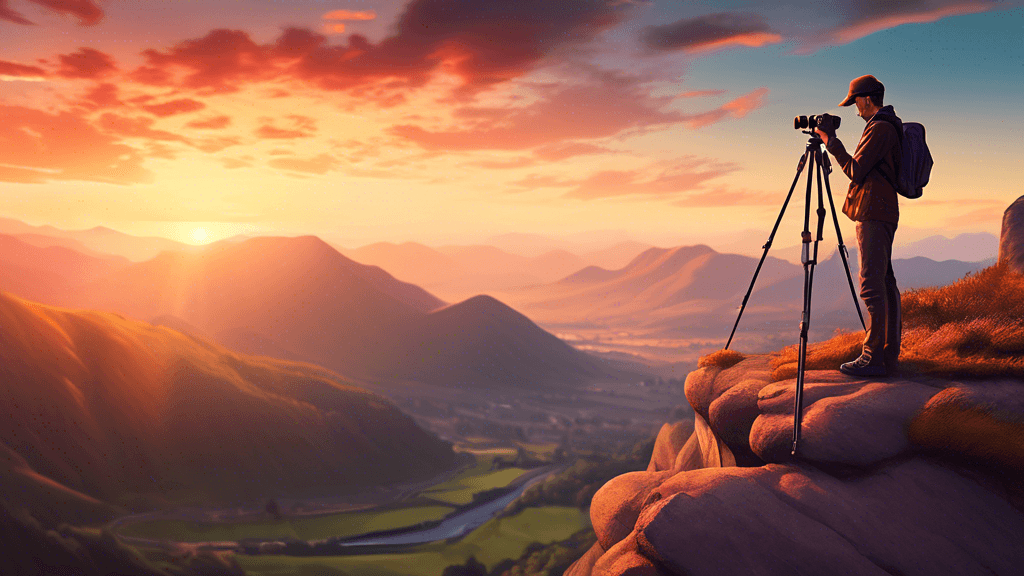
Mastering the Art of Landscape Photography: A Comprehensive Course Guide
Share
Introduction to Landscape Photography
Landscape photography transcends mere picture taking; it's an art form that requires patience, passion, and a profound connection with nature. With this detailed guide, we aim to equip both aspiring and seasoned photographers with the comprehensive knowledge needed to capture breathtaking landscape images. Whether you're gearing up to photograph your local park or the grand vistas of a national park, mastering the techniques of landscape photography can immensely enhance the quality of your work.
Understanding the Essentials of Landscape Photography
At its core, landscape photography is about showcasing the natural world in a way that resonates with viewers, invoking emotions and sparking curiosity. But what makes a landscape photograph stand out? Let's break down the essentials:
- Composition: The arrangement of elements in a photograph can make or break the impact of the shot. Understanding rules like the Rule of Thirds, leading lines, and symmetry can play a pivotal role in creating visually pleasing images.
- Lighting: Light quality is crucial in landscape photography. The 'golden hour,' just after sunrise or before sunset, often provides soft, diffused light that enhances textures and depth in landscapes.
- Camera Settings: Utilizing the right combination of ISO, aperture, and shutter speed can greatly influence the sharpness and depth of your landscapes. Typically, a lower ISO, a small aperture (f/11-f/16), and a balanced shutter speed give the best results.
Advanced Techniques in Landscape Photography
While mastering the basics is essential, advancing your skills involves exploring more complex techniques:
- High Dynamic Range Imaging (HDR): This technique involves taking several photos of the same scene at different exposures and combining them to create a photo with richer colors and greater details.
- Long Exposure: Using a slow shutter speed allows moving elements like water or clouds to blur, creating a sense of motion and changing the overall feel of the image.
- Panoramic Stitching: For vast landscapes, standard frames may not do justice. Panoramic stitching involves combining several overlapping photos to produce a wide-angled view.
Choosing the Right Equipment
The right gear can make a significant difference in landscape photography. Here’s what every landscape photographer should consider:
- Camera: A DSLR or mirrorless camera with a full-frame sensor is ideal for capturing detailed landscape shots. However, recent advancements in mobile phone cameras also offer decent alternatives for beginners.
- Lenses: Wide-angle lenses are typically preferred in landscape photography because they can capture more of the scene. However, telephoto lenses are equally important for isolating distant details like mountaintops or a solitary tree.
- Accessories: Tripods stabilize your camera for sharp, clear shots, especially in low-light conditions. Additionally, using filters such as polarizers or neutral density filters can help in managing reflections and light exposure.
Practical Tips for Capturing Stunning Landscape Photos
Beyond understanding theory, practical tips can often provide the breakthrough you need in landscape photography. Here are some actionable insights:
- Scout Your Location: Visit your chosen location at different times of the day to understand how the light changes. Note the best spots for certain types of shots.
- Monitor Weather Conditions: Weather plays a significant role in the mood and outcome of your shots. Overcast days can help in capturing moody photos, while sunny days are great for vibrant, cheerful shots.
- Experiment with Perspectives: Don’t just stick to eye level shots. Experiment with high and low angles to add variety to your portfolio.
Conclusion and Call to Action
This comprehensive course guide is designed to equip you with the tools and techniques necessary to excel in landscape photography. Embrace these practices, experiment frequently, and continually seek to enhance your connection with the natural environment. Remember, the journey of mastering landscape photography is as rewarding as the stunning visuals you will create.
Now take your camera, step outside, and start capturing the beauty of our world through your unique lens!





